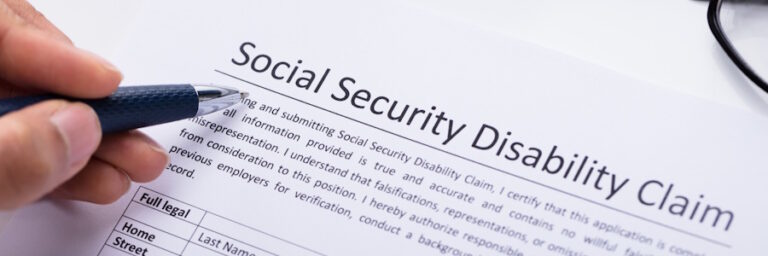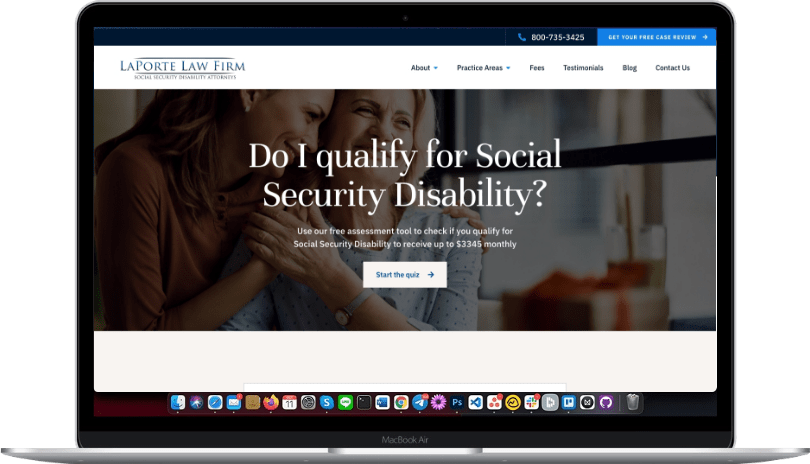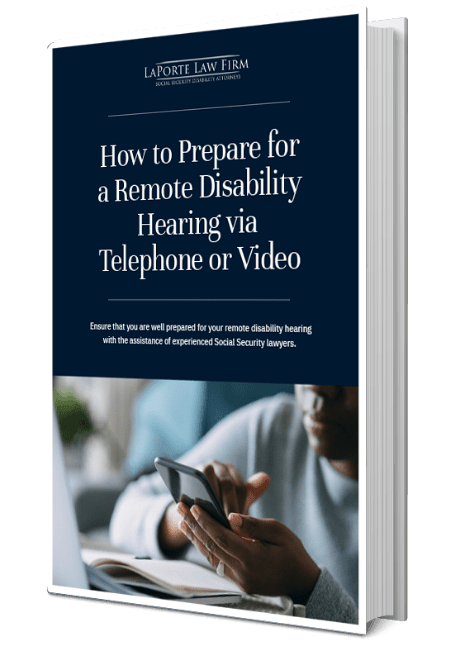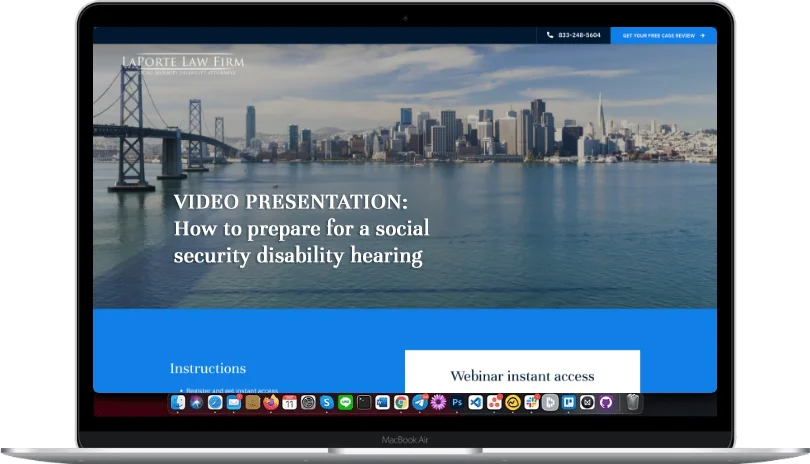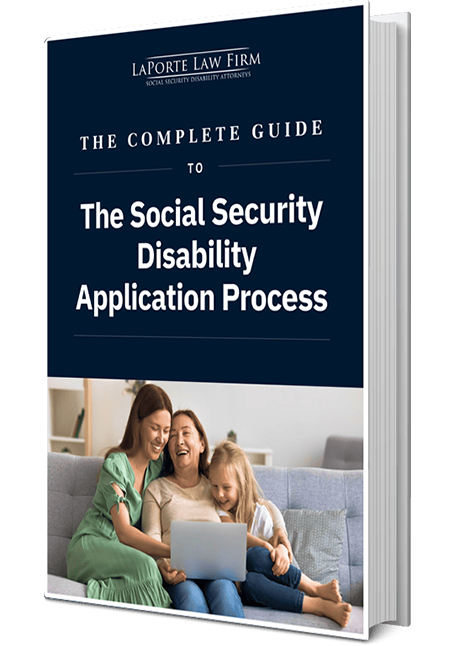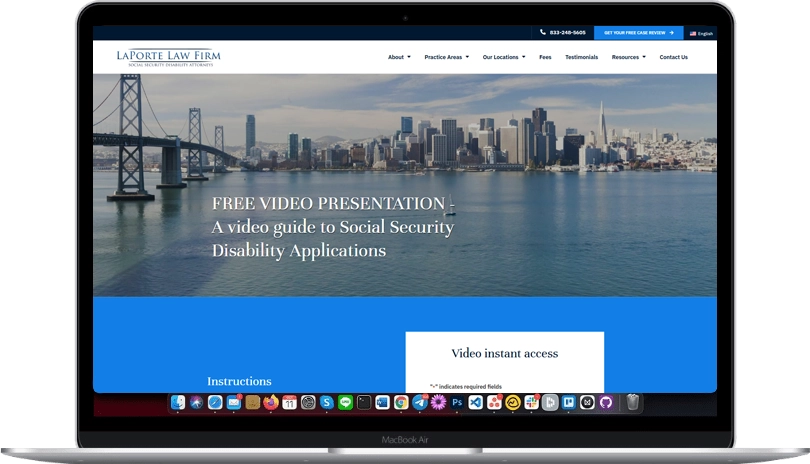
Applying for Social Security disability benefits can be a lengthy and complex process. It often involves multiple stages, including initial applications and appeals, which can take months or even years to complete. Despite these delays, it’s important to understand that if your claim is ultimately approved, you may be entitled to back pay. Back pay, or retroactive benefits, includes the monthly disability payments you would have received from your established onset date (i.e., the date Social Security determines your disability began) through the date your claim is approved, subject to specific waiting period rules.
For Social Security Disability Insurance (SSDI), this includes a mandatory five-month waiting period after the established onset date or 12 months before the application date, whichever is later. Meanwhile, Supplemental Security Income (SSI) benefits typically begin from the month after your application date, provided you have met all of the SSI requirements since the date of your application. This means that even though the process can be frustratingly slow, you will not lose the benefits owed to you during the time your claim was being reviewed.
The Social Security disability benefit process isn’t always straightforward. One of the most frequently misunderstood rules is the start of entitlement to disability benefits and the waiting period for benefits. The waiting period is the time you wait until you can begin to receive your monthly Social Security disability benefit. To provide clarity, this article delves into the rules regarding the waiting period for SSI and SSDI benefits and the important exceptions to these rules.
Understanding SSDI and SSI
The Social Security Administration (SSA) offers two types of disability benefits: Social Security Disability Insurance and Supplemental Security Income. The goals of the SSDI and SSI programs are to provide financial assistance to individuals with disabilities: SSDI supports those who have worked and paid into the Social Security system but can no longer work due to a serious medical condition, while SSI aids supports those with limited income and resources.
While both programs use the same medical requirements and disability standard to determine if someone is disabled, the eligibility rules are different.
- To qualify for SSDI, you must be “insured” for benefits. This means you’ve worked and paid Social Security FICA taxes long enough and recently enough to earn work credits. You can earn up to four work credits per year. In 2025, you get one credit for every $1,810 you earn in wages. The number of credits you need to qualify for SSDI depends on your age at the time you become disabled. You generally need 40 credits, with 20 of those earned in the last 10 years. This means that you’ve worked and paid into the system for 5 of the previous 10 years.
- Younger individuals need fewer credits to be insured for benefits, depending on their age. For example, if you become disabled before age 24, you may only need six credits earned in the three years before your disability began. These work credits are how the SSA determines whether you’ve paid into the Social Security system enough to be eligible for SSDI benefits.
- In contrast, SSI is based on financial need. You don’t need a sufficient work history or to be insured under the SSA system to qualify. To be eligible for SSI benefits, you must have very limited income and assets: less than $2,000 if you’re single or $3,000 if you’re married. However, certain types of income and assets are excluded, such as a primary residence, one vehicle that you drive, household goods, and specific special needs trusts.
Waiting Period for Benefits
SSDI waiting period
SSDI retroactive benefits can begin either 12 months before the application date or after a five-full-calendar-month waiting period following the established onset date of disability (EOD), whichever is later. The EOD is the date that Social Security finds you were no longer able to work due to your disability. This is the date that your disability started, and it is proven by medical evidence that demonstrates your inability to perform full-time work. The EOD is important because it helps determine when the five-month waiting period for SSDI begins and influences when retroactive benefits can start.
For example, if someone applies for SSDI on January 15, 2024 and becomes disabled with an established onset date of June 10, 2023, after a five-full-calendar-month waiting period, benefits would begin in December 2023. In another example, let’s say that someone became disabled with an established onset date of June 10, 2021, and applied for SSDI on January 15, 2024. In this case, because the five-month waiting period only lasts until December 2021, the benefits would begin in January 2023, 12 months before the application date.
SSI waiting period
The rules for retroactive benefits are different for SSI compared to SSDI. SSI does not provide retroactive benefits before the application date. There is no five-month waiting period. Instead, SSI benefits can only be paid starting from the month after the application date, provided the applicant meets all eligibility criteria, including income and resource limits, back to the application date.
For example, if someone applies for SSI in January 2024 and their established onset date of disability is January 2023, then their benefits would start in February 2024, assuming they qualify at that time. There are no retroactive payments for months before the application, even if the individual became disabled months earlier.
Implications on Medicare Eligibility
If you are approved for SSDI, you will also become eligible for Medicare coverage, but not immediately. Medicare eligibility begins after a 24-month waiting period, which starts in the month you become entitled to SSDI benefits. It’s important to understand that this entitlement date is not the same as the date you became disabled (i.e., the established onset date). Instead, it is the month your SSDI benefits officially start, which typically comes after a mandatory five-month waiting period following your EOD or 12 months before the application date, whichever is later. Once 24 months have passed from that entitlement month, you will automatically be enrolled in Medicare.
Medicare coverage is not available for individuals who qualify for SSI benefits only. Instead, people who are approved for SSI typically receive health coverage through Medicaid, which is a state-run program that provides medical assistance to low-income individuals. Unlike SSDI, there is no 24-month waiting period for Medicaid. In most cases, Medicaid coverage begins immediately when SSI benefits start. Because Medicaid is administered by each state, the specific rules and coverage details may vary, but approval for SSI usually results in automatic Medicaid enrollment in many states. This ensures that individuals with limited income and resources have access to essential medical care as soon as their financial eligibility for SSI is established.
Exceptions to the Waiting Period
As discussed, SSDI and SSI benefits are typically subject to a waiting period before payments begin. However, some individuals qualify for exemptions that waive or shorten this delay.
Specific conditions such as ALS
As of July 23, 2020, individuals diagnosed with amyotrophic lateral sclerosis (ALS), also known as Lou Gehrig’s disease, are exempt from the standard five-month waiting period for SSDI benefits. This means that if your SSDI claim is approved on or after this date, your benefits can begin immediately, without the typical five-calendar-month delay. This exception was established by the ALS Disability Insurance Access Act of 2019 and was retroactively applied to claims approved on or after July 23, 2020.
Additionally, individuals with ALS are also exempt from the 24-month waiting period for Medicare coverage. This means that once you are approved for SSDI benefits due to ALS, you will be automatically enrolled in Medicare without delay.
Childhood Disability Benefits (CDB)
Childhood Disability Benefits (formerly called Disabled Adult Child benefits) are Social Security benefits paid to adults who became disabled before age 22. CDB are paid based on a parent’s Social Security work record. This means the individual must be the child (including adopted or stepchild) of a parent who is retired, disabled, or deceased and eligible for Social Security benefits. To be eligible for CDB, the adult child must meet Social Security’s definition of disability for adults. This benefit can provide financial support for individuals with lifelong disabilities who are unable to work, helping them maintain independence and access essential care.
CDB does not have to serve a waiting period for benefit entitlements. SSA rules explain that benefits may be payable for the months in which the disabled adult child is age 18 or over and is under a disability that began before age 22.
Prior period of disability cases
SSA rules explain that a prior period of disability (PPD) is exempt from the waiting period for benefits. A PPD refers to a situation where an individual was previously entitled to SSDI benefits due to a disability, and that period of entitlement ended, typically because the individual returned to work or their medical condition improved. If the person later becomes disabled again, and the new period of disability starts within five years (60 months) of when the previous period ended, they will not have to go through a waiting period again.
For example, let’s say you were approved for SSDI, with benefits beginning in June 2018. You then recovered and returned to work, ending your disability period in December 2019. In September 2023, if you become disabled again and file a new disability claim, the SSA will waive the standard waiting period. This means you can start receiving benefits as early as September 2023, rather than waiting the five-month waiting period until February 2024.
Compassionate allowances (CAL)
The Compassionate Allowances program fast-tracks disability claims for individuals with certain severe medical conditions that clearly meet the SSA’s standards for disability. Under the CAL program, the SSA uses medical information and diagnostic criteria to quickly identify applicants who have specific qualifying conditions. Examples of conditions on the Compassionate Allowances list include advanced cancers, ALS (Lou Gehrig’s disease), certain rare childhood disorders, and early-onset Alzheimer’s disease, as well as other terminal illnesses or conditions that cause significant, permanent disability.
Importantly, while the CAL program expedites the decision-making process, it does not waive the standard SSDI five-month waiting period (with the exception of conditions such as ALS) or change the financial rules for SSI. However, it does mean that a claim can be approved in weeks rather than months or years, which can be crucial for people with rapidly progressing or terminal illnesses.
Planning for the Waiting Period
Waiting for disability benefits to begin can be stressful, but planning ahead can ease the burden. Here are key steps you can take to stay financially and medically stable during the waiting period.
Strategies for financial planning
Applying for Social Security disability benefits can be overwhelming, especially when you’re facing a gap in income. Therefore, planning ahead financially is essential. Since the application and approval process can take several months or longer, having a financial strategy in place, such as identifying savings, temporary assistance, or support networks, can help you manage expenses during this period.
One of the first steps you must take is to carefully evaluate the date you became unable to work due to your disability, as the established onset date, in addition to the date of application, helps determine when your benefits may begin. Understanding these timelines allows you to estimate when payments might begin and plan for any gap in income.
Exploring income alternatives
While waiting for Social Security disability benefits to begin, it’s important to explore alternative sources of income to stay financially stable. If you’re eligible, SSI can provide more immediate support, especially for those with limited income and assets. Some states offer State Disability Insurance (SDI) for short-term, non-work-related disabilities, while workers’ compensation may be available for job-related injuries or illnesses.
You might also consider help from family, friends, crowdfunding platforms, or local assistance programs such as food banks or housing support. In urgent cases, a loan or an early withdrawal from retirement accounts may be an option, though it should be used cautiously due to potential tax consequences. Planning ahead with these options can help bridge the gap while your disability claim is processed.
To learn more about your options, see our article “What to Do for Income While Waiting for Disability Benefits.”
Gain clarity and peace of mind regarding your Social Security disability benefits application, including how to navigate the waiting period, with help from LaPorte Law Firm. Our dedicated professionals will provide you with expert legal support every step of the way. Schedule your consultation with us today to get your questions answered.
FAQS
The five-month waiting period for SSDI (Social Security Disability Insurance) is a mandatory delay before benefits begin, starting from the established onset date of your disability. This means you will not receive SSDI payments for the first five full months after the Social Security Administration (SSA) determines you became disabled or 12 months prior to the application date, whichever is the later date. The purpose of this waiting period is to ensure that benefits are provided to individuals with long-term disabilities, not temporary or short-term conditions. It also gives the SSA time to verify medical evidence and confirm the severity and duration of the disability. While it can create a financial gap, this policy is intended to reserve resources for those with lasting impairments.
Back pay, also known as retroactive benefits, refers to the lump-sum payment you receive after being approved for Social Security disability benefits to cover the time you were eligible but had not yet been paid. For SSDI, back pay can include benefits dating back to your established onset date of disability, minus the mandatory five-month waiting period. This payment can cover up to 12 months prior to your application date, if the Social Security Administration determines you were disabled during that time.
For SSI, back pay is also available but may be paid in installments if the total amount is large, depending on your financial situation. This lump sum helps compensate for the delay in receiving monthly benefits during the application and approval process.
The five-month waiting period for SSDI does not apply to everyone. While it does apply to most people approved for SSDI, there are important exceptions. As of 2020, the waiting period is waived for those diagnosed with and approved based on amyotrophic lateral sclerosis (ALS). Additionally, the waiting period may also be waived if you’re applying under a prior period of disability (PPD) and meet the specific criteria. It also does not apply for those who are eligible for Childhood Disability Benefits, also called Disabled Adult Child benefits.
However, for most applicants, the five-month waiting period still applies, meaning SSDI benefits won’t begin until five full months after the established onset date of disability.
Sometimes, the SSA can make a mistake and miscalculate your retroactive benefits. This can occur if they miscalculated the waiting period for benefits. A 2024 audit found that the SSA incorrectly applied the five-month waiting period in 36% of sampled cases. If you think an error was made, you should reach out to your local SSA office to alert them of this error and ask for a recalculation of your retroactive benefits.


